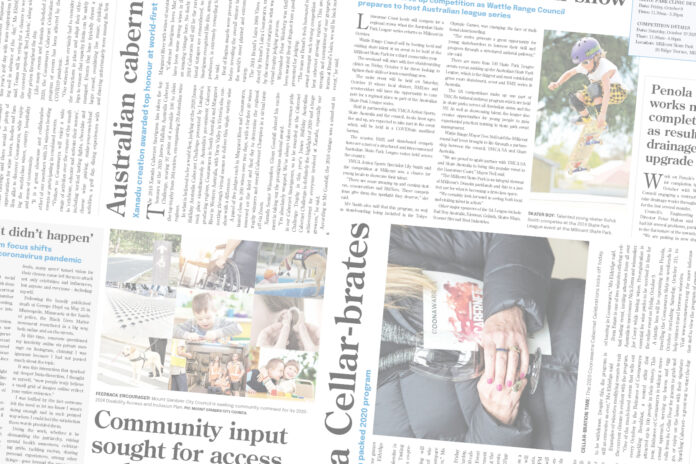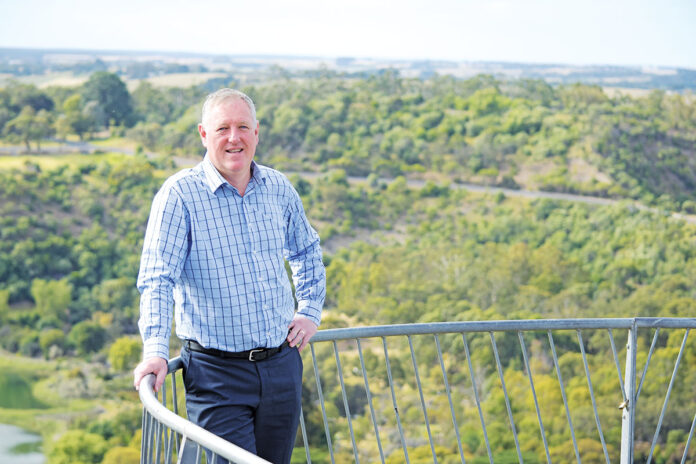Rising costs continue to take a toll on the Mount Gambier property market, with tenants and home seekers still feeling the pinch.
Complete Real Estate rental team leader Bri McBain said the number of applications for properties had slightly decreased, however the strain on potential tenants’ wallets continued.
“We are still getting a lot of people moving from interstate, but locally it seems like there is less movement, so there are less applications,” Ms McBain said.
“But it is still a struggle for people because the prices are so high at the moment, and with the cost of living it is a struggle for those who are looking even more so than it was 12 months ago.
“The reality is, there are pressures on both landlord and tenants, and as property managers we are here to assist both parties.”
According to the latest PropTrack Market Insight report, the period rentals were on market increased somewhat in regional areas during the past year but remains very low.
In March, the median time a rental was on market before leasing in regional areas was 20 days, an increase of three days year on year.
Complete Real Estate residential leasing specialist Hannah Thompson said due to lack of tenant affordability high-end properties were starting to take seven to 14 days longer to let, however the majority of Complete rental properties were re-letting prior to the property becoming vacant.
“Three bedroom and one bathroom houses are receiving 10 to 15 applications, and two bedroom and one bathroom units are receiving 20 to 25 applications,” Ms Thompson said.
“The current median rental price in Mount Gambier is around $370 per week for houses and $280 per week for units.”
Ms McBain said the length of time properties were on the market depended on the type of property and people are seeking more affordable smaller homes or large homettes.
“Properties under $400 per week are still getting snapped up really quickly, usually re-letting prior to the property becoming vacant but anything above $400 per week we are seeing pressure on families’ ratio of affordability,” she said.
“I just think it is due to increase in living costs, people are more than ever aware of their budget.
“To be paying $400 per week plus on rent is a considerable impact on a standard weekly income.”
Ms McBain said the landlords versus tenant price situation was a catch-22 and although rental prices continued to increase, they appeared to be levelling out.
“Landlords will always look for a growing positive return on investment, but a reduction in the volume of applications we are receiving for high-end properties means the significant rent increases are no longer there,” she said.
“In the last couple of weeks, we have actually had to have two price reductions, which we have not had in a while.
“It is not the quality of the property; it is just the demand of the applications and the affordability, really.”
However, Ms Thompson said Complete continued to receive a large number of rental applications with insufficient affordable properties to fulfil these demands.
“We are seeing almost double the amount of applications for units and apartments than we are for houses, which is due to affordability,” she said.
Ms McBain said she could not see the local housing situation improving in the foreseeable future.
“I have not heard of any sort of plan from state government to tackle the affordable living crisis and the supply and demand pressures,” she said.
“New housing developments are selling to investors however they will likely to be executive living, targeted at high income earners.”
New bond laws were introduced to reduce bond amounts on properties, raising the bond threshold to $800 to ensure only a four-week bond
is required for most South Australian rental properties.
This change will reduce the amount of upfront costs for tenants by between $500 and $1600, depending on the amount of rent paid.
Ms McBain was unsure if this change would contribute to a long-term solution to the housing crisis.
“Long term solution is about state government directly providing more affordable housing or incentives for private investors to invest in affordable living solutions,” she said.
“Changes to bond thresholds certainly is not the solution when a large number of tenants have access to Housing SA bond assistant already, it is the weekly pressure on their budget that is the issue.
“I just think more needs to be done by state government to take responsibility and not rely on private investors as they too are facing their own pressures.
“The lack of affordable housing is hard for people.
“What we are seeing is the majority of applicants who have steady employment are more likely to meet the affordability ratio; it’s those that are relying on government assistance that are struggling.
“I read an article recently that the government are going to look at increasing Jobseeker payments, which may help, I do not know if that is the answer, increasing benefits may only be a band-aid fix.”




